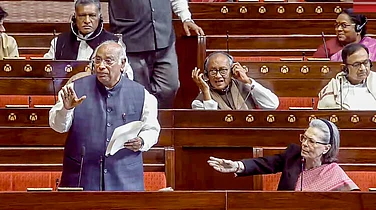The recent rise in the number of Covid-19 infections in the UK is being attributed to the Delta variant of the virus, first found in India. This variant has also been attributed to the unprecedented spike in infection rate leading to the second wave of the virus in India.
Identified as the B.1.617.2 strain of SARS-C0V-2, the Delta variant was classified by the World Health Organisation (WHO) as a variant of concern (VOC) after it was found that it was more transmissible than the alpha variant of the virus.
WHO puts a variant under the VOC category when it is associated with an increase in transmissibility or detrimental change in Covid-19 epidemiology; increase in virulence; or decrease in the effectiveness of public health measures or available diagnostics, vaccines, therapeutics.
Recently, many studies suggested that the increased gap between the two doses of the Covid-19 vaccine made people more vulnerable to the Delta variant during the second wave of the virus.
But how much truth is there to it?
Some experts warn that the delta variant may be 100 per cent more transmissible than the previously dominant variant, alpha. But according to experts, transmissibility alone cannot explain delta’s dominance.
Successful variants often have a biological advantage – through mutation – that helps them spread more easily among the population. And it’s the variants with these mutations that natural selection acts on, ensuring they out-compete other, less transmissible strains.
The delta variant may, however, have a more complicated relationship with people than those that came before it. It is even possible that it was government policies, rather than the variant’s inherent increased transmissibility, that led to its success and dominance in the UK.
The forces driving delta
The Delta variant’s ability to infect people who are partly vaccinated against it may explain its rise to dominance. While people who have received two doses of the Pfizer vaccine may have around 88 per cent protection, this figure is as low as 33.5 per cent with one dose of either the Pfizer or AstraZeneca vaccine, according to Public Health England.
Viewed from the perspective of evolutionary selection, it seems that the UK government’s decision to lengthen the period between first and second vaccine doses provided delta with an extra window to infect people. While delta is likely to have evolved in India through natural selection, unconscious selection may have ensured its survival in the UK.
It is possible that other factors, including the crowded living conditions of Bolton — the town in north-west England where the delta variant first became widespread — as well as its higher transmissibility, were responsible for its success. And the government’s decision, even if it did contribute to the variant’s dominance, may not have been the wrong one: hospitalisations and deaths appear to be lower, even as cases drastically rise.
What is important, however, is to think about the implications of the artificial selection hypothesis – if it is true.
Rather than making blanket claims about the overall transmissibility of different variants as they arise, it will become increasingly important, particularly as different parts of the world are vaccinated at different rates, to think about the way different variants — which have been selected, naturally or unconsciously — will interact with new populations as they spread.
The US, for example, has focused on providing two doses in a shorter timeframe. And assuming that because the delta variant has been successful in the UK it will create the same problems in the US, is not necessarily justified: selection is likely to have different effects in the two populations.
More broadly, this evolutionary perspective suggests that we need to look to selection, however it takes place, to make better predictions about which variant features are likely to lead to success in different populations. Uniting evolutionary theory with population health sciences is likely to be essential for improving our responses to disease, now and in the future.
(With PTI inputs)


























